
Buying a home in South Africa can be difficult for low- to middle-income earners, especially when it comes to upfront costs. The First Home Finance Programme, more commonly known as the Finance Linked Individual Subsidy Programme (FLISP) is a government subsidy designed to help first-time homebuyers reduce the loan amount they need to borrow. This lowers monthly repayments and makes homeownership more accessible. FLISP is aimed at people who earn too much for RDP housing but not enough to buy a home without support. If your household earns between R3 501 and R22 000 per month, you may qualify.
Key Takeaways
- FLISP assists first-time buyers: The FLISP subsidy helps South Africans earning between R3 501 and R22 000 per month by reducing their home loan amount or deposit, making homeownership more affordable.
- Subsidy amounts vary by income: Depending on your income bracket, you could receive a once-off subsidy ranging from R38 878 to R169 264, which is paid directly to your bank or lender.
- Eligibility and documentation matter: To avoid rejection, applicants must meet all criteria, including income limits, being a first-time buyer, and providing complete, certified documentation with approved home financing.
About Arcadia Finance
Get the loan you need with ease through Arcadia Finance. With no application fees and access to 19 trusted lenders registered with South Africa’s National Credit Regulator, we offer a smooth, secure process tailored to your financial goals.
What Is First Home Finance (FLISP)?
First Home Finance, formerly referred to as FLISP, is a government-backed subsidy initiative aimed at supporting first-time homebuyers in South Africa who earn too much to qualify for a fully subsidised RDP house, but still do not earn enough to purchase a property independently without financial assistance.
This programme was established by the Department of Human Settlements (DHS) to promote affordable and sustainable homeownership among South African citizens and legally recognised permanent residents. It assists eligible households by offering a once-off subsidy, which can be applied towards reducing the initial deposit on a property, lowering the total home loan amount required, or helping to cover related legal costs such as bond registration and property transfer fees.
The Ways That The FLISP Subsidy Can Assist You
- Buy your first previously-owned home: You can use the FLISP subsidy to help finance the purchase of an already-built residential property, provided this is your first time becoming a homeowner.
- Acquire a vacant, serviced plot connected to a building contract: The subsidy may also be applied toward purchasing an empty, serviced residential stand, commonly referred to as a plot, on the condition that it is tied to an approved housing construction agreement through the relevant government department.
- Construct a new home on land you already own: If you already own a serviced residential plot, the FLISP subsidy can help you cover the cost of building a new house, as long as the construction is carried out by a builder who is registered with the National Home Builders Registration Council (NHBRC).
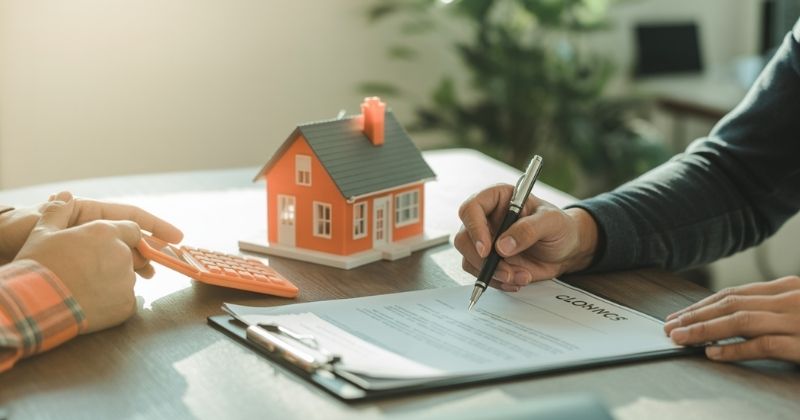
How to Apply for the FLISP Subsidy
Applying for the Finance Linked Individual Subsidy Programme (FLISP) is a structured process designed to assist first-time homebuyers in South Africa. The subsidy aims to make homeownership more accessible by reducing the initial mortgage loan amount, thereby lowering monthly repayments. Below is a detailed, step-by-step guide to help you navigate the application process effectively.
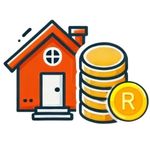
Secure Home Loan Approval or Alternative Financing
Before initiating your FLISP application, you must obtain approval for a home loan or alternative financing. This financial backing is crucial as the FLISP subsidy is linked to your ability to secure funding for your home purchase. Alternative financing options may include pension or provident fund loans, co-operative or community-based savings schemes (e.g., stokvels), employer-assisted housing schemes, unsecured loans, instalment sale agreements, or rent-to-own agreements.
If a FLISP subsidy doesn’t fully cover your upfront housing costs, you can still make your homeownership dream a reality by learning how to secure a home deposit loan. This financing option helps bridge the gap between your savings and the actual deposit amount, making it easier to buy a home while using FLISP as partial funding.
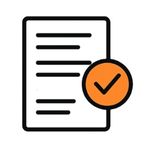
Complete the FLISP Application Form
Once you have secured financing, the next step is to complete the FLISP application form. This form can be obtained from the National Housing Finance Corporation (NHFC) website or through your financial institution. Ensure that all sections of the form are filled out accurately to avoid delays in processing.
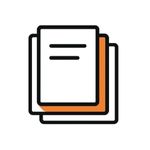
Gather and Submit Required Supporting Documents
Along with your completed application form, you will need to submit several supporting documents:
- Certified copies of identity documents: For all applicants and co-applicants.
- Proof of income: Recent payslips or bank statements.
- Home loan approval letter: From your financial institution.
- Offer to purchase or building contract: Depending on whether you are buying an existing property or building a new one.
- Marriage certificate or affidavit of marital status: If applicable.
- Birth certificates of dependants: If applicable.
Submit your application and supporting documents to the NHFC, your bank, or your local municipality’s housing department.

Await Assessment and Approval from the NHFC
After submission, the NHFC will assess your application to determine eligibility and the subsidy amount. The processing time for the application is typically around 7 days, but it can take up to 21 days for the NHFC to notify you of the result.
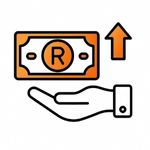
Subsidy Disbursement
Upon approval, the FLISP subsidy is paid directly to your financial institution. This payment reduces the principal amount of your home loan, thereby lowering your monthly repayments and making homeownership more affordable.
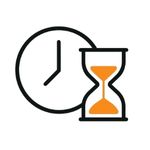
Processing Time
The entire application process, from submission to subsidy disbursement, generally takes between 7 to 21 days. However, processing times may vary depending on the completeness of your application and the responsiveness of the institutions involved.
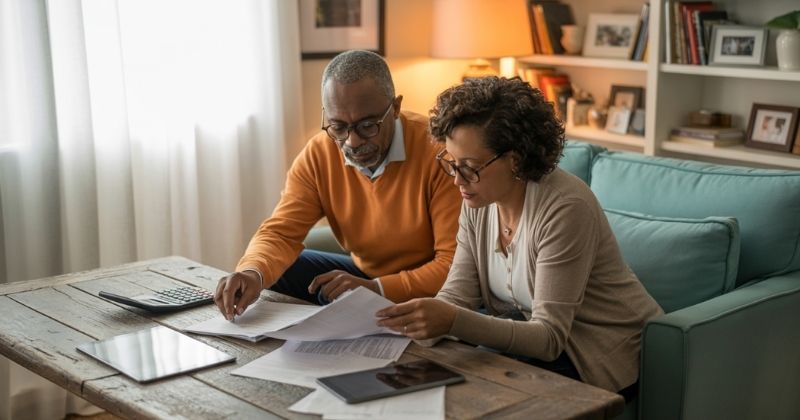
First Home Finance (FLISP) Requirements
To qualify for the First Home Finance programme, previously known as FLISP, your total gross household income must fall between R3 501 and R22 000 per month. This includes all basic income earned by household members and, where applicable, any housing allowance received.
You must be a South African citizen or hold valid permanent residency status. Proof of identification and legal residence will be required during the application process.
Applicants must be at least 18 years of age and legally capable of entering into a contract under South African law. This confirms your ability to commit to financial obligations such as a home loan.
You should either be legally married, living with a partner in a committed cohabitation arrangement, or single with at least one person who is financially dependent on you. Dependants may include children or relatives who rely on your income.
You must not have benefited from any government housing subsidy programme in the past. This condition ensures that the subsidy is directed towards first-time beneficiaries only.
Finally, you must not have previously owned any fixed residential property. This includes full or partial ownership of any home, ensuring the subsidy supports only genuine first-time homebuyers.
How Much Can You Get from FLISP?
The Finance Linked Individual Subsidy Programme (FLISP), now known as First Home Finance, offers a once-off, non-repayable subsidy to assist first-time homebuyers in South Africa. The subsidy amount is determined by your gross monthly household income, with lower-income earners receiving higher subsidies.
Subsidy Amounts Based on Income
As of 2024, the subsidy amounts range from R38 878 to R169 264. Here’s how the subsidy scales with income:
- Income between R3 501 and R3 700: Qualify for the maximum subsidy of R169 264.
- Income between R7 101 and R7 300: Eligible for a subsidy of R102 893.
- Income between R21 801 and R22 000: Qualify for the minimum subsidy of R38 878.
These figures are indicative; for precise amounts, it’s recommended to use the official FLISP subsidy calculator.
Using the FLISP Subsidy Calculator
To determine the exact subsidy amount you qualify for, you can use the FLISP Subsidy Calculator available on the official FLISP website. By entering your gross monthly household income, the calculator will provide the subsidy amount applicable to your income bracket
If you’re buying a vacant plot and plan to build, don’t overlook the option to consider a building loan for constructing your dream home. FLISP can be used in conjunction with building loans, giving you the flexibility to create a home tailored to your needs.
Common Reasons for FLISP Application Rejection
Applying for the Finance Linked Individual Subsidy Programme (FLISP) can significantly aid first-time homebuyers in South Africa. However, certain common pitfalls can lead to application rejection. Understanding these can help applicants prepare more effectively and increase their chances of approval.
| Reason for Rejection | Description |
|---|---|
| Incomplete or Incorrect Documentation | Submitting incomplete or inaccurate information is a frequent cause of rejection. Ensure all required documents are provided, correctly filled out, and certified where necessary. This includes identity documents, proof of income, and home loan approval letters. |
| Not Meeting Eligibility Criteria | FLISP has specific eligibility requirements. Applicants must be South African citizens or permanent residents, over 18 years old, and have a gross monthly household income between R3,501 and R22,000. Additionally, applicants must be first-time homebuyers and not have previously benefited from a government housing subsidy. |
| Previous Government Housing Assistance | If you or your spouse have previously received any form of government housing assistance, such as an RDP house, you are ineligible for FLISP. |
| Existing Property Ownership | FLISP is intended for individuals who have never owned residential property. If you currently own or have previously owned a home, your application will be rejected. |
| Failure to Secure Approved Financing | FLISP is a finance-linked subsidy, meaning it must be associated with approved financing for a home purchase. If you fail to secure a home loan or alternative financing from a recognised institution, your application cannot proceed. |
| Credit Issues | While FLISP itself doesn’t require a credit check, securing the necessary financing does. If your credit history includes judgements, defaults, or you’re under debt review, you may struggle to obtain financing, which in turn affects your FLISP application. |
| Delays in Property Transfer | After FLISP approval, there is a stipulated period within which the property transfer must occur. Delays beyond this period can lead to the withdrawal of the subsidy. |
| Application Submission Errors | Submitting your application to the wrong department or through unofficial channels can result in rejection. It’s essential to follow the correct submission procedures, typically through the National Housing Finance Corporation (NHFC), your bank, or your local municipality’s housing department. |
| Changes in Financial Circumstances | Significant changes in your financial situation, such as job loss or income reduction, after applying can affect your eligibility. If your income falls below the required threshold, your application may be denied. |
| Misrepresentation or Fraudulent Information | Providing false information or misrepresenting your circumstances is a serious offence and will lead to immediate rejection of your application. It may also result in legal consequences. |

Conclusion
The FLISP subsidy, now known as First Home Finance, is a valuable government support programme aimed at helping qualifying South Africans take their first step into homeownership. By offering a once-off, non-repayable subsidy linked to approved home financing, FLISP reduces the financial burden of securing a property, whether for a deposit, reducing the loan amount, or covering legal costs. The application process requires accurate documentation and meeting specific eligibility criteria, but for those who qualify, it can make owning a home more affordable and achievable. With clear guidelines and a straightforward application, FLISP is a practical option for low- to middle-income earners looking to buy their first home.
Frequently Asked Questions
Yes, retroactive applications are allowed if you’ve already secured a home loan and meet the subsidy requirements. The application must be submitted within a set period (usually 12 months) after bond registration.
No, the subsidy is paid directly to your bank or financial institution to reduce the amount of your home loan or cover specific home-buying costs like a deposit or legal fees.
No. FLISP is a finance-linked subsidy, which means you must first be approved for a home loan or alternative recognised financing before you can apply.
No. FLISP is a once-off government grant, not a loan. It does not impact your credit profile or repayment history.
Yes, but only if the issue that caused the rejection is resolved, such as missing documents, securing approved finance, or correcting eligibility concerns. You must still meet all requirements at the time of reapplying.
Fast, uncomplicated, and trustworthy loan comparisons
At Arcadia Finance, you can compare loan offers from multiple lenders with no obligation and free of charge. Get a clear overview of your options and choose the best deal for you.
Fill out our form today to easily compare interest rates from 19 banks and find the right loan for you.




